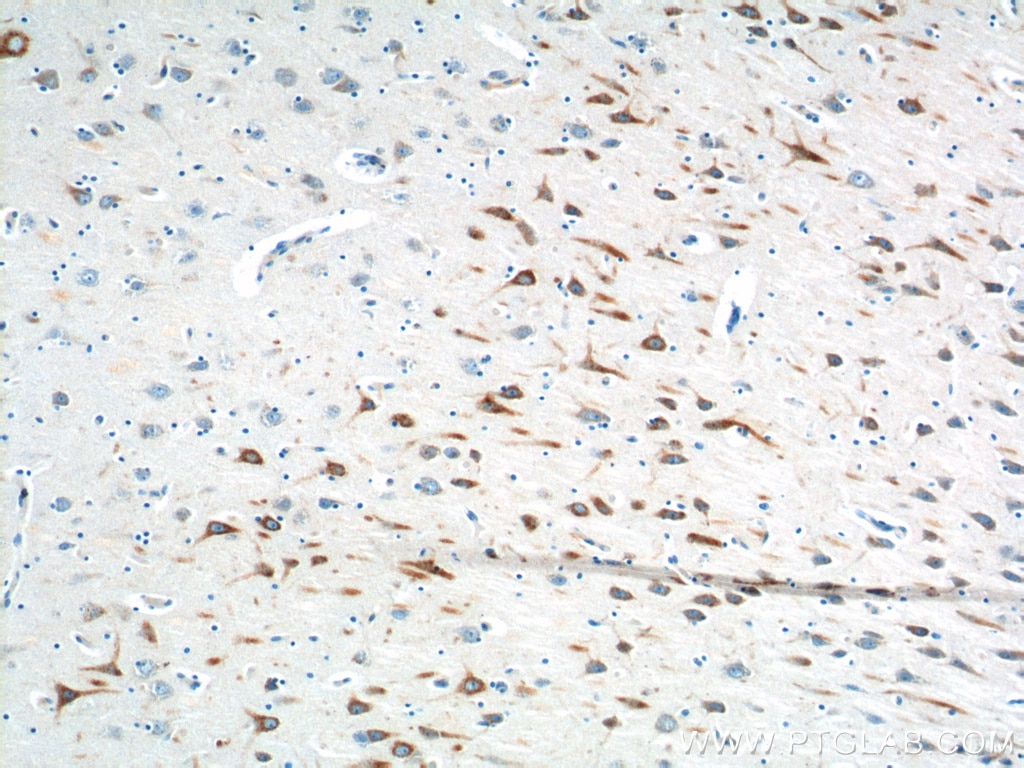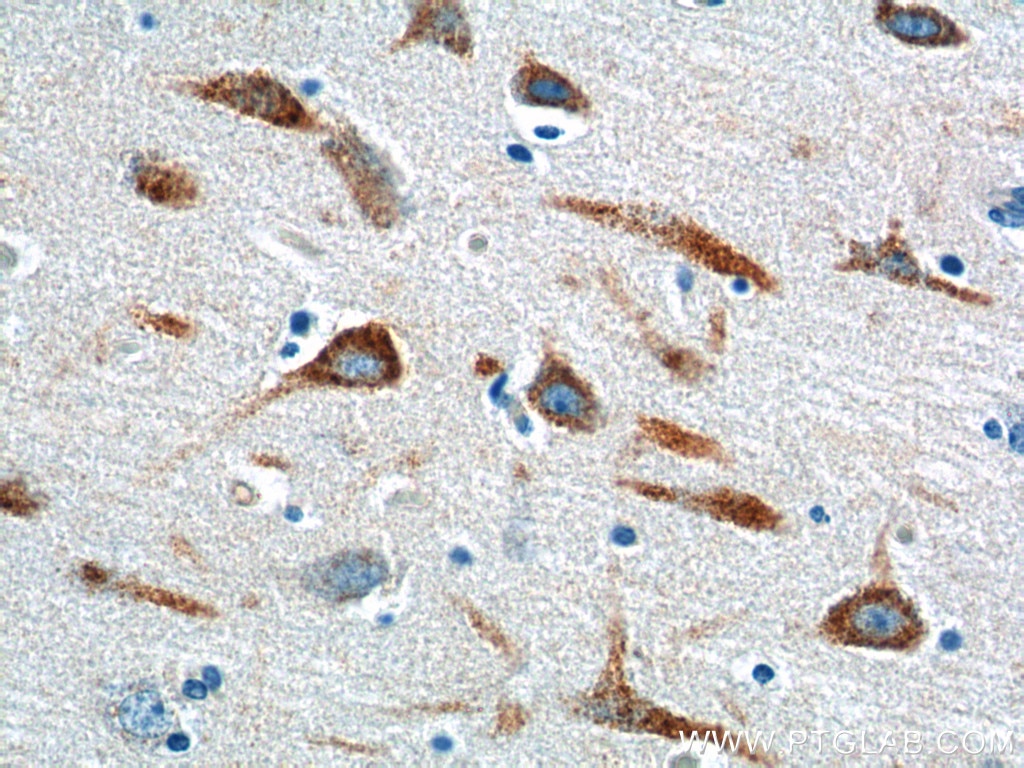Anticorps Polyclonal de lapin anti-PTGER3
PTGER3 Polyclonal Antibody for IHC, ELISA
Hôte / Isotype
Lapin / IgG
Réactivité testée
Humain, rat, souris
Applications
WB, IHC, IF, ELISA
Conjugaison
Non conjugué
N° de cat : 14357-1-AP
Synonymes
Galerie de données de validation
Applications testées
| Résultats positifs en IHC | tissu cérébral humain il est suggéré de démasquer l'antigène avec un tampon de TE buffer pH 9.0; (*) À défaut, 'le démasquage de l'antigène peut être 'effectué avec un tampon citrate pH 6,0. |
Dilution recommandée
| Application | Dilution |
|---|---|
| Immunohistochimie (IHC) | IHC : 1:50-1:500 |
| It is recommended that this reagent should be titrated in each testing system to obtain optimal results. | |
| Sample-dependent, check data in validation data gallery | |
Applications publiées
| WB | See 7 publications below |
| IF | See 2 publications below |
Informations sur le produit
14357-1-AP cible PTGER3 dans les applications de WB, IHC, IF, ELISA et montre une réactivité avec des échantillons Humain, rat, souris
| Réactivité | Humain, rat, souris |
| Réactivité citée | rat, Humain, souris |
| Hôte / Isotype | Lapin / IgG |
| Clonalité | Polyclonal |
| Type | Anticorps |
| Immunogène | PTGER3 Protéine recombinante Ag5711 |
| Nom complet | prostaglandin E receptor 3 (subtype EP3) |
| Masse moléculaire calculée | 43 kDa |
| Numéro d’acquisition GenBank | BC024229 |
| Symbole du gène | PTGER3 |
| Identification du gène (NCBI) | 5733 |
| Conjugaison | Non conjugué |
| Forme | Liquide |
| Méthode de purification | Purification par affinité contre l'antigène |
| Tampon de stockage | PBS with 0.02% sodium azide and 50% glycerol |
| Conditions de stockage | Stocker à -20°C. Stable pendant un an après l'expédition. L'aliquotage n'est pas nécessaire pour le stockage à -20oC Les 20ul contiennent 0,1% de BSA. |
Informations générales
PTGER3 (Prostaglandin E Receptor 3), also known as EP3, is a G protein-coupled receptor (GPCR). Activates pathways involved in proliferation, migration, and apoptosis, often via cross-talk with PI3K-AKT and MAPK cascades (PMID: 38566528). High PTGER3 levels drive tumorigenesis, angiogenesis, and cisplatin resistance via the Ras-MAPK/Erk-ETS1-ELK1/CFTR1 axis (PMID: 30655206).
Protocole
| Product Specific Protocols | |
|---|---|
| IHC protocol for PTGER3 antibody 14357-1-AP | Download protocol |
| Standard Protocols | |
|---|---|
| Click here to view our Standard Protocols |
Publications
| Species | Application | Title |
|---|---|---|
Oxid Med Cell Longev Inhibition of Prostaglandin E2 Receptor EP3 Attenuates Oxidative Stress and Neuronal Apoptosis Partially by Modulating p38MAPK/FOXO3/Mul1/Mfn2 Pathway after Subarachnoid Hemorrhage in Rats | ||
Aging (Albany NY) Integrated transcriptome expression profiling reveals a novel lncRNA associated with L-DOPA-induced dyskinesia in a rat model of Parkinson's disease. | ||
Front Cell Dev Biol An Advanced Systems Pharmacology Strategy Reveals AKR1B1, MMP2, PTGER3 as Key Genes in the Competing Endogenous RNA Network of Compound Kushen Injection Treating Gastric Carcinoma by Integrated Bioinformatics and Experimental Verification | ||
Int J Mol Sci Correlative Study on Impaired Prostaglandin E2 Regulation in Epicardial Adipose Tissue and its Role in Maladaptive Cardiac Remodeling via EPAC2 and ST2 Signaling in Overweight Cardiovascular Disease Subjects. | ||
Biomolecules In Silico, In Vitro, and In Vivo Analysis of Tanshinone IIA and Cryptotanshinone from Salvia miltiorrhiza as Modulators of Cyclooxygenase-2/mPGES-1/Endothelial Prostaglandin EP3 Pathway. | ||
Acta Physiol (Oxf) c-Jun N-terminal Kinase mediates prostaglandin induced sympathoexcitation in rats with chronic heart failure by reducing GAD1 and GABRA1 expression. |



